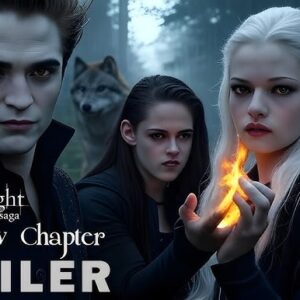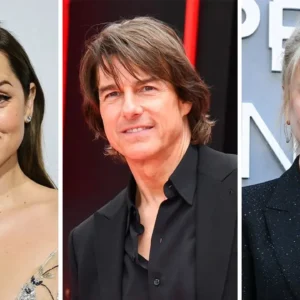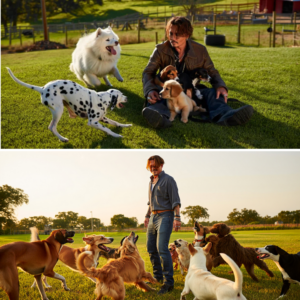
Since its debut in December 2019, Netflix’s The Witcher has captivated audiences with its gritty take on Andrzej Sapkowski’s fantasy novels, blending monster-hunting action with political intrigue and emotional depth. Now, as the show films its fifth and final season in England while Season 4 undergoes post-production for a 2025 release, it’s the perfect time to reflect on how the series—and its cast—has evolved over the years. From Henry Cavill’s commanding presence as Geralt to Liam Hemsworth’s controversial takeover, from breakout stars to surprising exits, The Witcher’s journey has been as tumultuous as the Continent itself. Let’s analyze the cast’s impact, their performances, and how changes over the seasons have shaped the show’s legacy.
Season 1 (2019): A Star Is Born with Henry Cavill’s Geralt
When The Witcher premiered, it introduced a relatively unknown cast led by Henry Cavill as Geralt of Rivia, the stoic, silver-haired witcher with a heart of gold beneath his gruff exterior. Cavill, already a household name as Superman in the DCEU, brought a gravitas to the role that won over fans of both the books and the CD Projekt Red video games. His physicality—honed through intense training—was matched by a deep commitment to the character, evident in his gravelly voice (inspired by Doug Cockle’s game portrayal) and his nuanced portrayal of Geralt’s moral complexity. Cavill’s dedication was infectious, and his chemistry with Anya Chalotra as Yennefer and Freya Allan as Ciri set a strong foundation for the series.
Chalotra, a newcomer at the time, delivered a standout performance as Yennefer, the fiery sorceress with a tragic past. Her arc in Season 1—from a hunchbacked outcast to a powerful mage willing to sacrifice everything for power—was both heartbreaking and empowering. Allan, just 17 during filming, brought a youthful vulnerability to Ciri, the runaway princess destined to wield immense power. Supporting players like Joey Batey as Jaskier (the bard whose song “Toss a Coin to Your Witcher” became a viral hit) and Kim Bodnia as Vesemir, Geralt’s mentor, rounded out the ensemble with charm and depth. Season 1’s nonlinear storytelling drew mixed reviews, but the cast’s chemistry and the show’s ambitious world-building made it a hit, drawing 76 million households in its first month, according to Netflix.
Season 2 (2021): Expanding the World, Testing the Cast
Season 2 saw the core trio—Geralt, Yennefer, and Ciri—finally unite at Kaer Morhen, the witcher stronghold, as Ciri trained to control her Elder Blood powers. The season introduced new witchers, including Lambert (Paul Bullion) and Eskel (Basil Eidenbenz), who added a rough-edged camaraderie to the mix. However, Eskel’s death at the hands of a leshen—a stark deviation from the books—angered fans, and Eidenbenz’s brief tenure left little room for impact. Vesemir’s role expanded, with Bodnia delivering a grounded performance as the father figure torn between protecting Ciri and training her for battle.
Chalotra’s Yennefer faced criticism for a controversial arc where she betrayed Ciri to regain her magic, a plot point not in the books. While Chalotra’s acting remained compelling, the writing undermined Yennefer’s agency, leaving some fans frustrated. Allan, however, shone as Ciri, her training sequences showcasing her growth into a fierce young woman. Batey’s Jaskier continued to steal scenes with his wit, though his breakup with Geralt felt forced to some viewers. Newcomer MyAnna Buring as Tissaia, Yennefer’s mentor, added emotional weight to the mage storyline, but the season’s reliance on original plots—like the Voleth Meir—drew ire for straying too far from Sapkowski’s work. Still, the cast’s performances held the season together, even as the narrative faltered.
Season 3 (2023): A Turning Point and Cavill’s Farewell
Season 3 marked a turning point for The Witcher, both in story and cast dynamics. Split into two parts, the season focused on the growing threat of the Wild Hunt and the political machinations of Dijkstra (Graham McTavish) and Philippa (Cassie Clare). McTavish and Clare brought a cunning intensity to their roles, elevating the show’s political intrigue. The season also introduced Istredd (Royce Pierreson) as a more prominent figure, his romance with Yennefer adding complexity to her arc.
Cavill’s final outing as Geralt was bittersweet. He delivered some of his best work, particularly in the emotional Thanedd coup sequence, where Geralt’s desperation to protect Ciri was palpable. However, his exit—announced in 2022—loomed large, with speculation that his frustration with the show’s deviations from the books played a role. Chalotra and Allan continued to impress, their mother-daughter bond becoming the emotional core of the season. A new addition, Mahesh Jadu as Vilgefortz, revealed himself as the season’s true villain, his chilling performance setting the stage for future conflicts.
The season also saw the departure of Bodnia as Vesemir due to scheduling conflicts with his work on Apple TV+’s F1. His absence in Season 4 was a blow, as Vesemir’s mentorship was a fan-favorite element. Season 3 ended on a cliffhanger, with Geralt, Yennefer, and Ciri separated, setting up a darker tone for the final chapters.
Season 4 (2025): A New Geralt and Fresh Faces
Season 4, currently in post-production for a 2025 release, introduces Liam Hemsworth as Geralt, a casting change that has divided fans. Hemsworth, known for The Hunger Games, has reportedly immersed himself in the role, training extensively and studying the books. A teaser clip released by Netflix in May 2024 showed him in action, and while some praised his physicality, others felt he lacked Cavill’s gravitas. The season adapts Baptism of Fire, following Geralt’s journey with his “Hansa”—a group including Regis (Laurence Fishburne), Milva (Meng’er Zhang), and Jaskier.
Fishburne’s casting as Regis, a wise vampire surgeon, has been a highlight, with early reports praising his gravitas. Sharlto Copley as Leo Bonhart, a ruthless bounty hunter, promises to bring menace, while James Purefoy as Skellen and Danny Woodburn as Zoltan add depth to the ensemble. Chalotra and Allan remain the emotional anchors, with Yennefer leading a group of sorceresses and Ciri joining the Rats, a band of teenage outlaws. The season’s back-to-back filming with Season 5 has raised concerns about pacing, but the new cast members bring fresh energy to the story.
Season 5 (Filming Now): The Endgame
Currently filming in England after starting in South Africa, Season 5 will adapt The Tower of the Swallow and Lady of the Lake, concluding the saga. Set photos show Hemsworth’s Geralt in action, with scenes involving Queen Meve’s knights and pit fights featuring Ciri. The season promises to tie up loose ends, but the absence of key players like Bodnia and the mixed reception to Hemsworth’s Geralt cast a shadow. Fishburne, Copley, and the returning core cast—Chalotra, Allan, and Batey—are expected to carry the emotional weight, but fans remain cautious after the show’s history of creative liberties.
Analysis: What Made the Cast Iconic?
The Witcher cast’s evolution reflects the show’s highs and lows. Cavill’s Geralt was the heart of the series, his departure a seismic shift that Hemsworth struggles to overcome. Chalotra and Allan have grown into their roles, their performances a consistent strength. Batey’s Jaskier brought levity, while new additions like Fishburne and Copley signal a shift toward veteran talent. However, the loss of Bodnia and the controversial exits highlight the challenges of maintaining consistency in a long-running series.
The cast’s ability to navigate the show’s rocky narrative—marked by fan backlash over book deviations—makes them iconic. They’ve brought Sapkowski’s world to life, even when the writing faltered, creating characters that resonate with millions. As The Witcher nears its end, the cast’s legacy will be defined by their resilience and the emotional bonds they’ve forged on screen, proving that even in a world of monsters, it’s the human connections that endure.



